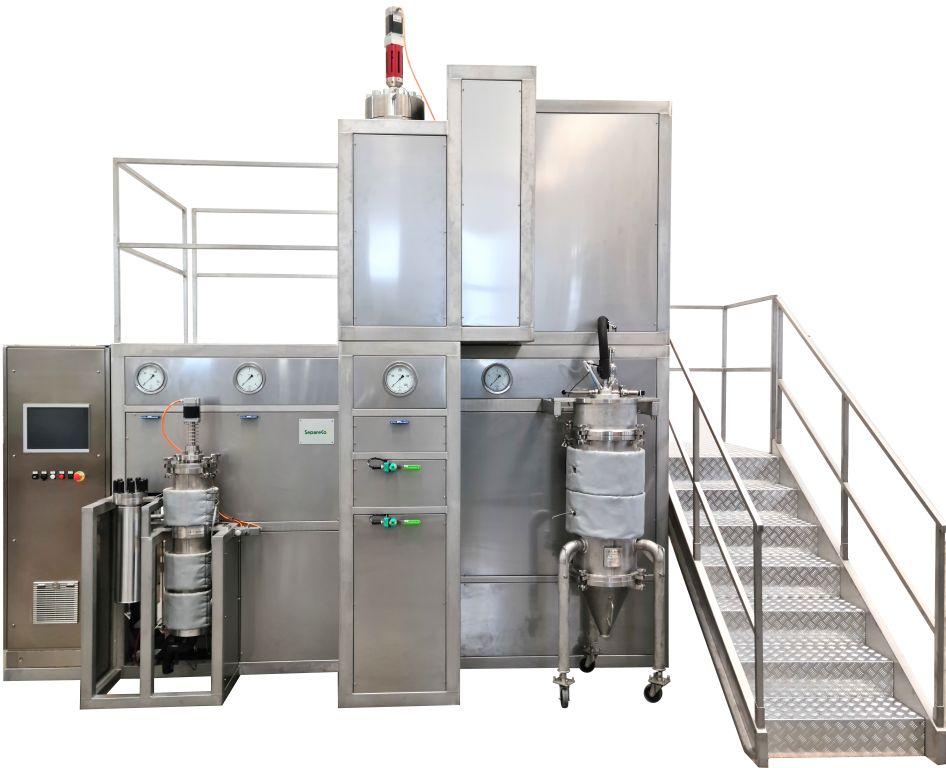Supercritical CO2 Extraction Process: What are the Latest Innovations in Techniques

Supercritical CO2 Extraction: One of the Most Innovative Techniques for Extracting Natural Compounds
The extraction of compounds from natural matter is the most well-known application of supercritical CO2 technology. First used in an industrial application in 1970 by German scientist Kurt Zosel (credited with the first US patent), it was employed to extract caffeine from coffee beans. The use of supercritical CO2 has revolutionized extraction processes by eliminating the need for organic solvents, replacing them with a sustainable and environmentally friendly technology.
Over the last 50 years, the supercritical CO2 extraction process (SFE) has undergone significant transformations. This is due to the use of high-efficiency separators capable of isolating extracted compounds during the extraction process into various collection vessels. The key distinction lies in the simultaneous occurrence of the secondary process, where the extracted compounds are separated, with the primary extraction process, eliminating additional costs and working time compared to traditional extraction technologies using organic solvents like ethanol.
With supercritical CO2 extraction technology, not only can compounds of interest be extracted from the matrix, but CO2 can also be removed, causing the pure extract to precipitate into the separator. Over time, multiple separation systems (2, 3, or 4 vessels) with different engineering solutions (gravimetric and cyclonic) have been developed. These systems introduce new process solutions that enhance the separation of extracted compounds while maintaining a supercritical state in the initial separation vessels—a state similar to that of the extraction but under different process conditions, selectively choosing different compounds in each separator.
The introduction of automation has significantly contributed to the widespread adoption of this technology. It’s essential to note that the supercritical state of CO2 is inherently unstable and requires continuous involvement from the automatic process control system. Specialized software-controlled processes have eliminated the need for specialists, making supercritical CO2 extraction accessible to a broader audience. Experts identify process conditions and input data into program recipes executed by automation software.
Supercritical CO2 Extraction Process: Unexplored Applications
Despite the widespread use of supercritical CO2 in extraction, many of its other applications remain largely unknown to the general public. Supercritical CO2 fractionation of liquid matrices in fractionation towers (SFF) is still utilized in specific cases. This operation, similar to countercurrent steam fractionation towers, is more effective and avoids the devastating effects of oxidation. Examples include the fractionation of limonene from lemon oil, triglycerides from fried oil for oil recycling, squalene from olive oil, and brandy aroma from alcoholic beverages.
Another application is supercritical CO2 antisolvent extraction (SAE), employed to separate a solid compound from a mixture of liquids. This is challenging to achieve with solid extraction or liquid fractionation. An example is the separation of flavonoids from propolis tincture or the separation of curcuminoids from mixtures of curcuminoids and triglyceride oils.
A rapidly growing trend is supercritical or near-critical CO2 micronization. Various solutions, such as NEA (Near-critical Expansion Atomization), PGSS (Particles from Gas Saturated Solutions), SAS (Solvent Anti Solvent), and CESS (Controlled Expansion Of Supercritical Solutions), offer different results by adopting well-known applications, operating up to nanoparticle sizes.
Finally, supercritical CO2 chromatography deserves special attention as an alternative to liquid chromatography, addressing its main challenge: the extensive use of organic solvents. While chromatography for analytical purposes in the laboratory (HPLC) doesn’t face this problem, in production (preparative chromatography), liquid solvent volumes can reach hundreds or thousands of liters, posing evident handling issues.
As evident, the supercritical CO2 extraction process has diverse applications, making it an attractive choice across multiple sectors. It provides advantages in terms of product quality, safety, and environmental sustainability.
If you own a company looking to harness the immense and sustainable potential of the supercritical CO2 extraction process, especially in the cosmetic or pharmaceutical industries, feel free to contact us for consultation. Fill out the form below, and we’ll be happy to guide you through your extraction process modernization.
